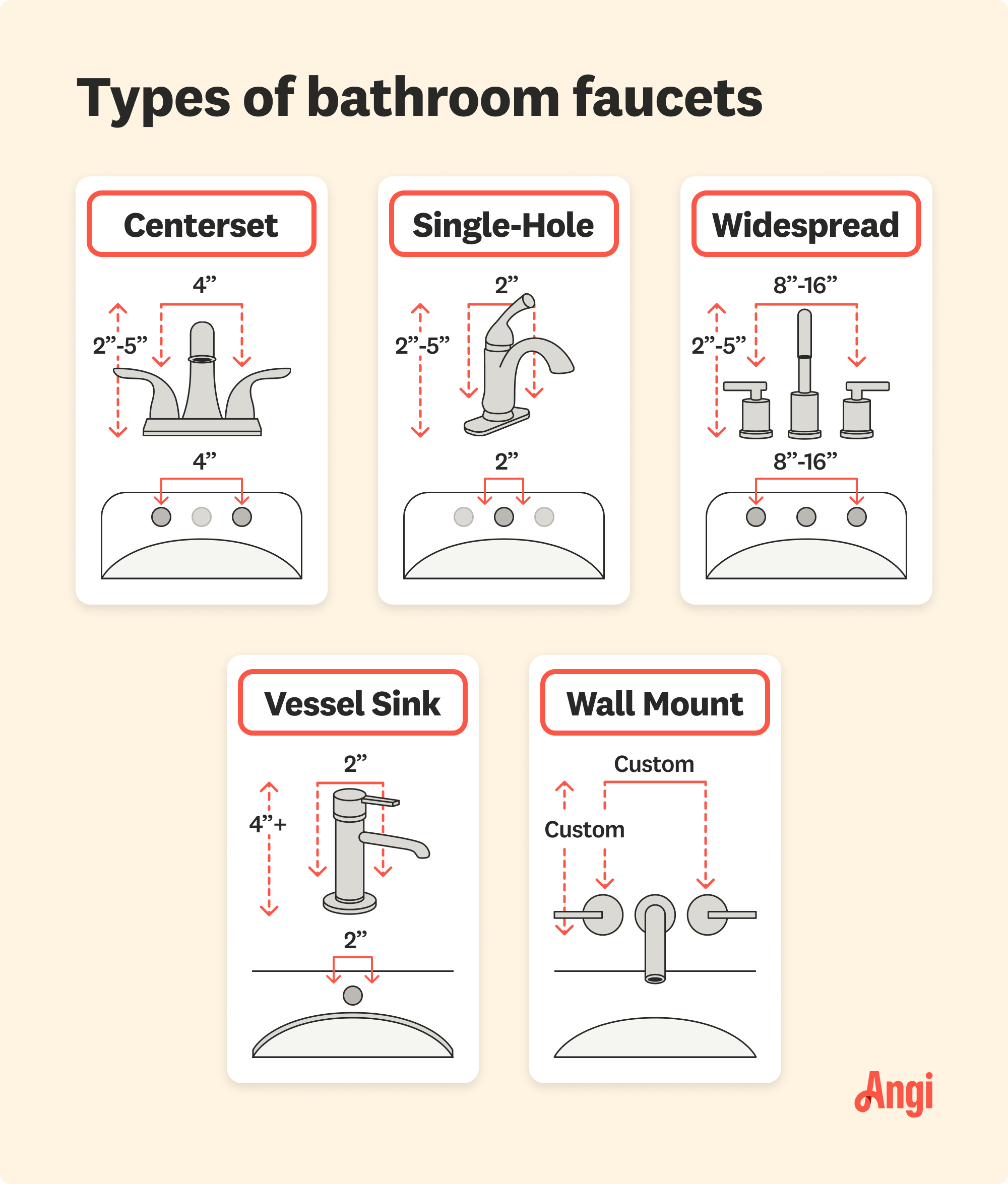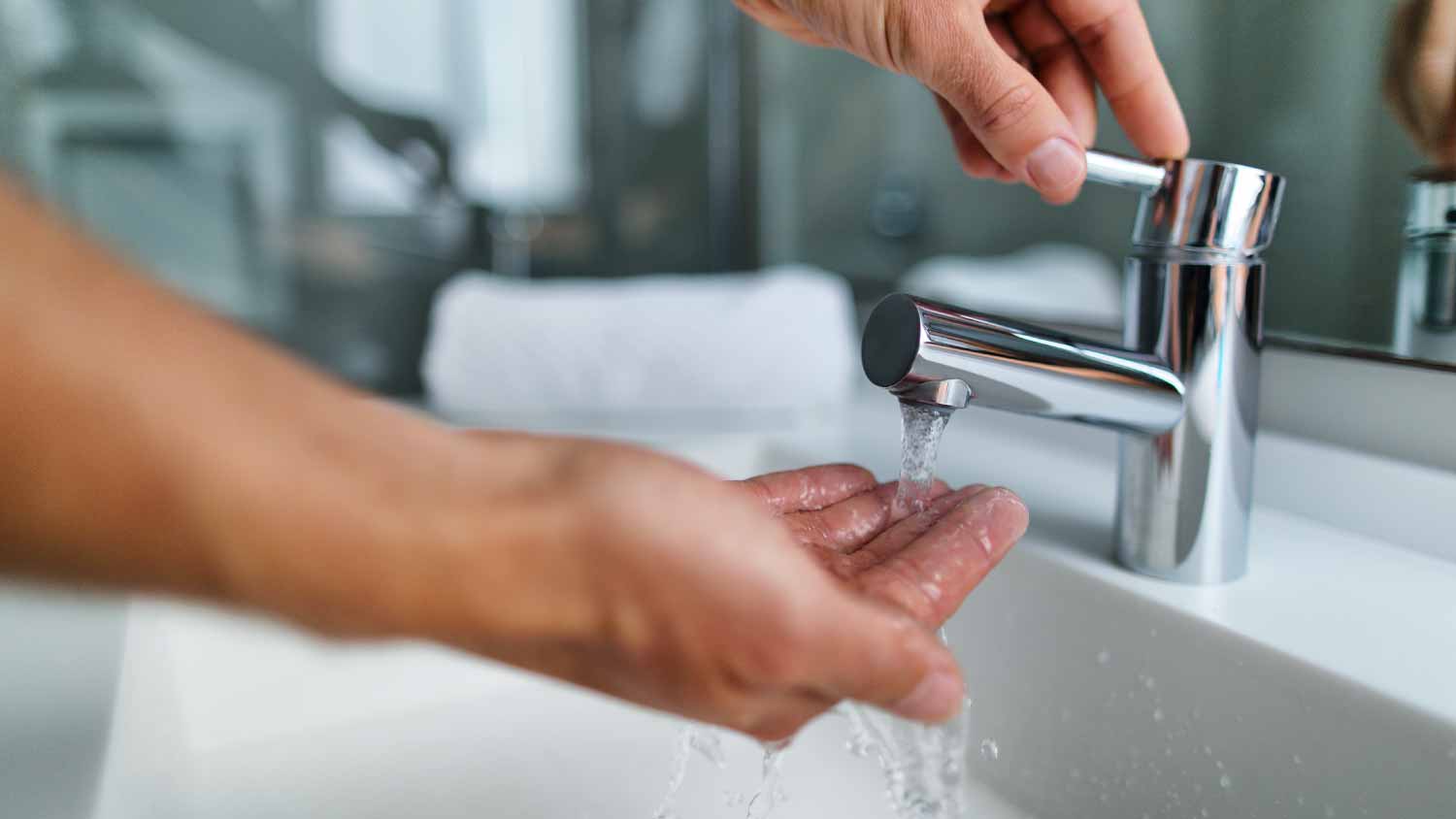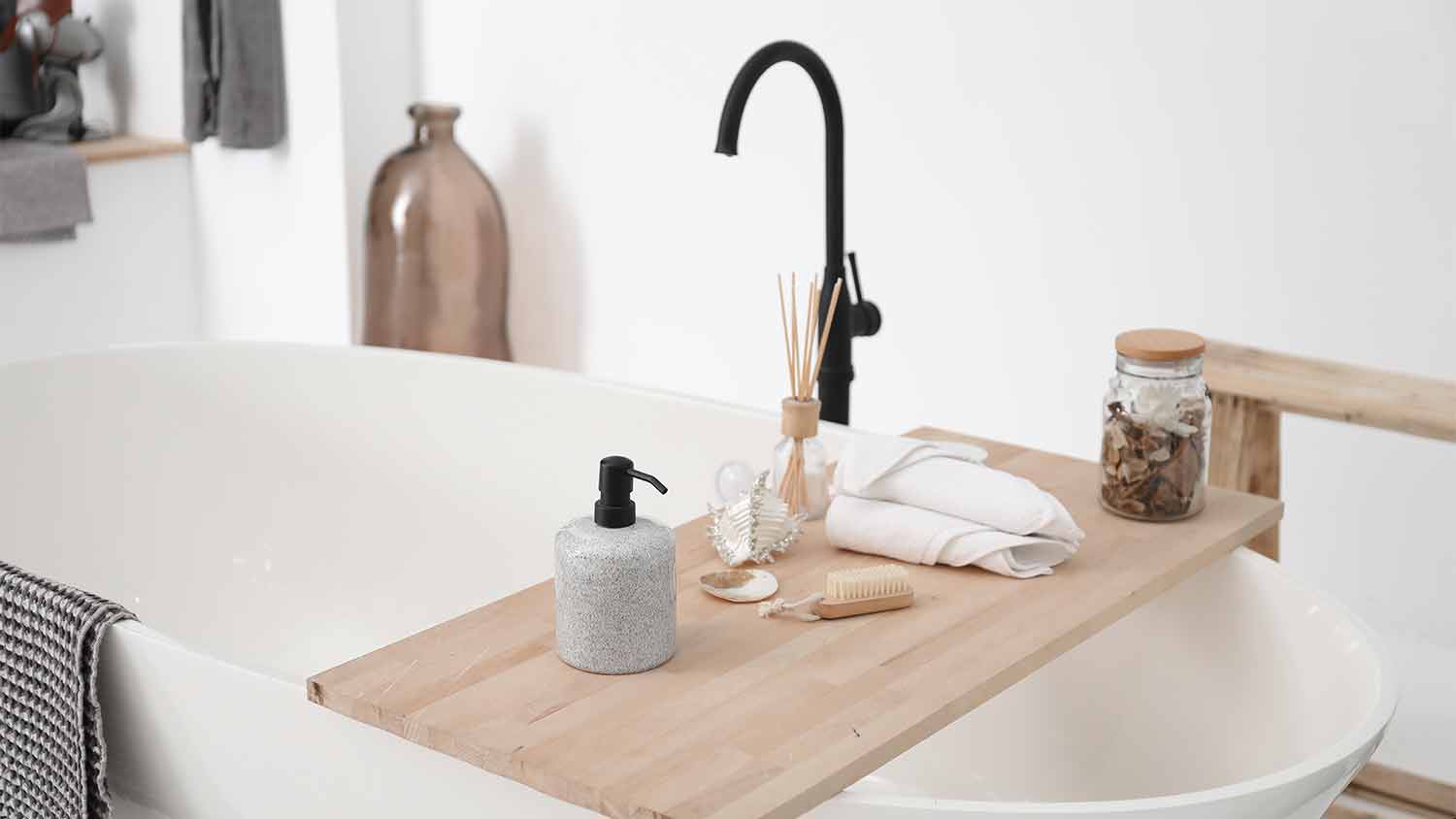
Shower installation costs depend on size, style, and materials. No matter the budget, this guide can help you plan your project and even save a few bucks.
Upgrade your bathroom with a new faucet that fits


Bathroom faucets typically range between 2 and 16 inches wide.
Faucets can fit into a single hole or require three pre-drilled installation holes.
To measure for a new fixture, remove the old faucet first.
Choose a new faucet based on your sink, connection, cost, color, and finish.
Although a faucet may not be the focal point of your bathroom, it can still make quite a statement when paired with the right type of sink. From simple single-hole options to chic wall-mounted faucets, this fixture can make all the difference in your bathroom’s aesthetic. But before you start thinking about different styles, know that not all bathroom faucets are the same size. Before buying a new bathroom faucet, let’s dive into what you need to know so it fits your sink, decor, and lifestyle.
There are three standard types of bathroom faucets: centerset, single-hole, and widespread. However, you can also find vessel sink faucets and wall-mount faucets within these categories. Each has a range of available sizes to fit a variety of sinks and installations, but most have a standard width and height that fit most sinks with pre-drilled fixture holes. The exception is wall-mount faucets, which require customized installation.


Different sinks call for different sizes of faucets. Before buying a new faucet, make sure the one you choose will fit your sink. This is especially important if you’re replacing an existing faucet or your sink has pre-drilled holes.
| Type of Bathroom Faucet | Height (in) | Width (in) |
|---|---|---|
| Centerset Faucet | 2–5 | 4 |
| Single-Hole Faucet | 2–5 | 2 |
| Widespread Faucet | 2–5 | 8–16 |
| Vessel Sink Faucet | 4+ | 2 |
| Wall Mount Faucet | Custom | Custom |
Centerset faucets, or mini-widespread faucets, are the most common type of bathroom faucet. They have a spout and two handles connected to a single base unit, requiring three installation holes. Most have handles spaced 4 inches apart, but some are 6 inches apart.
Single-hole faucets may have one or two handles, but they only require a single hole for installation because the handle is attached to the spout. You can use these versatile faucets with centerset or widespread holes using a deck plate or escutcheon plate to cover any unneeded holes.
Widespread faucets have a wider space between handles and are usually the best choice for three-hole basins since most have separate handles and spouts. They almost always have two handles and a spout between 6 and 16 inches apart.
Most vessel sink faucets have a single handle mounted on a spout. They’re often taller than other faucets because they’re best paired with vessel sinks, which are taller than other sink types. Most vessel sink faucets have a single handle. Their height should be at least 6 inches from the bottom of the sink bowl to the faucet spouts—the closer the spout opening to the base of the sink, the less splashing there will be.
Wall-mounted faucets have a longer spout and one or two handles mounted on the wall rather than the sink or countertop. These faucets don’t have a standard size since they usually come as separate pieces rather than a combination faucet. If you’re installing a wall-mount faucet, the spout must be long enough to extend over the sink where the water will fall and drain. The sink will also need to be deep enough to prevent splashing.
It’s frustrating to buy a new faucet only to have it not fit your existing sink. Prevent this by carefully measuring before you shop. While you can get an approximate measurement with your old faucet in place, it’s best to remove the faucet and handles from the sink.
Turn off the water and use a wrench or screwdriver to remove your old bathroom faucet and handles.
For sinks with three holes, measure from the center of the left handle hole to the center of the right handle hole. This number should be between 4 and 16 inches.
Next, measure the height of the faucet. This is the distance between the base of the faucet and the faucet’s highest point. It can also mean the distance between the base of the faucet to where the water comes out of the faucet opening, so you’ll want to write down both numbers.
Then, measure the spout reach. This is the distance the faucet hangs over the base and into the sink. Measure from the center of the faucet mount hole to the center of the drain at the bottom of the sink.
If you’re worried about not measuring correctly or want to switch to a different type of faucet from what you currently have, consider calling a pro instead. So, who replaces faucets? Plumbers are typically the go-to, but you can search for local faucet installation companies near you that can help.
To make the best decision on a new bathroom faucet, consider the following before making your purchase.
Your sink can help you choose your new faucet. You’ll want a faucet that fits the number of pre-drilled installation holes for the easiest installation and the best aesthetics. Certain faucets look better with certain types of sinks. For example, a single-hole faucet works best in smaller bathrooms. But spend time looking at examples to find the best for your bathroom.
A sink’s connection is the way it attaches to water supply lines. These are the most common:
Threaded Connections: This is the most common type of faucet connection. You’ll simply attach the faucet to the underlying pipes by twisting the faucet onto a pipe with matching threads, like attaching a sprayer nozzle to a garden hose. Most threaded connections use NPT (National Pipe Thread) as the standard connection size.
Hose Adapters: Hose adapters connect rigid pipes and fittings to flexible hoses. They’re most common in pull-down and pull-out kitchen faucets.
PEX Fittings: These fittings use crimp rings or clamps to attach fixtures to PEX tubing (also known as cross-linked polyethylene pipes) without the need for soldering.
If you’re concerned about sustainability, choose a high-quality faucet that will last so you don’t need to replace it as often. How long do bathroom faucets last? The average is about 15 years, but higher-quality fixtures will last longer, reducing waste and cost over time.
For eco-friendly reasons, consider getting a faucet that has a maximum flow rate of 1.5 gallons per minute or less. You can also install an aerator or flow restrictor to conserve water without sacrificing water pressure.
You’ll need to maintain your new faucet to keep it looking and functioning like new. When shopping, pay attention to the design and finish of the faucet. Spot-resistant, matte, and brushed faucets will look cleaner and hide water spots. If your faucet is decorative with many grooves or intricate designs, it can be harder to keep clean.
If the faucet has a lot of working parts, there are more parts that can break or malfunction.
The cost to replace a bathroom faucet can range from $170 to $360, depending on your choice.
While you may not want to splurge on a new faucet, you shouldn’t choose the least expensive option, as it may not be built to last. Instead, pick a quality faucet that has a warranty to back it up. Chrome, stainless steel, and nickel fixtures are the most reasonably priced materials. However, if you want to make a statement, spending a little more on a fantastic new fixture might be worth it.
Looks aren’t the most important thing, but they do matter. Design experts recommend matching or coordinating your new faucet with the other fixtures or accessories in your bathroom. You can choose finishes such as black, brass, bronze, chrome, gold, nickel, and stainless steel. Many come in antique, polished, matte, brushed, and pearlized finishes.
There are many faucet finish pros and cons to consider too. For example, spot-resistant finishes and matte fixtures will look cleaner than high-shine chrome fixtures.
Your options are fairly limited if you have the wrong bathroom sink faucet size for your sink. Since sink fixture holes are cut for specific faucet configurations and sizes, the wrong size fixture simply won’t fit. If you have a fixture that doesn’t fit the number of pre-drilled holes, you can either use a plate to cover extra holes or purchase a new faucet that fits correctly.
From average costs to expert advice, get all the answers you need to get your job done.

Shower installation costs depend on size, style, and materials. No matter the budget, this guide can help you plan your project and even save a few bucks.

The cost to demo a kitchen depends on its size, construction complexity, materials, and whether you DIY the job or not. This guide will help you budget better.

For a bathroom remodel, touch-up, or home perimeter, caulking is worth the investment. Find out average costs for window caulking, shower caulking, and more.

An updated bathtub can give a bathroom a whole new look. Find out how much it costs to replace a bathtub in St. Louis, MO, including prices by type and labor costs.

Whether you’re renovating or building a new bathtub, learn the standard bathtub sizes and styles to choose from to create a relaxing and functional space.

Planning a home renovation? Here’s how to avoid common house remodeling mistakes, so you can enjoy a picture-perfect home and save money in the long run.